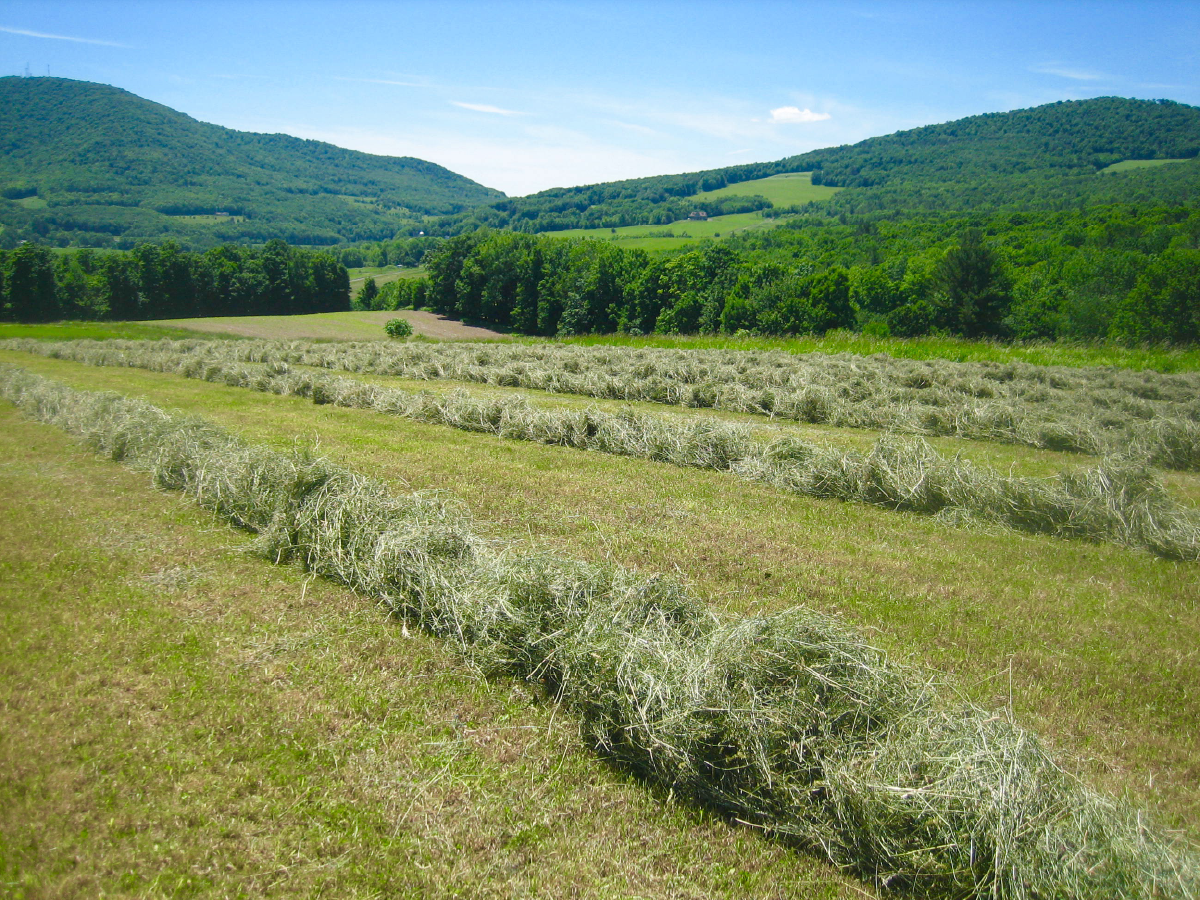Horse Hay Hassles and Hustles
By Nikki Alvin-Smith
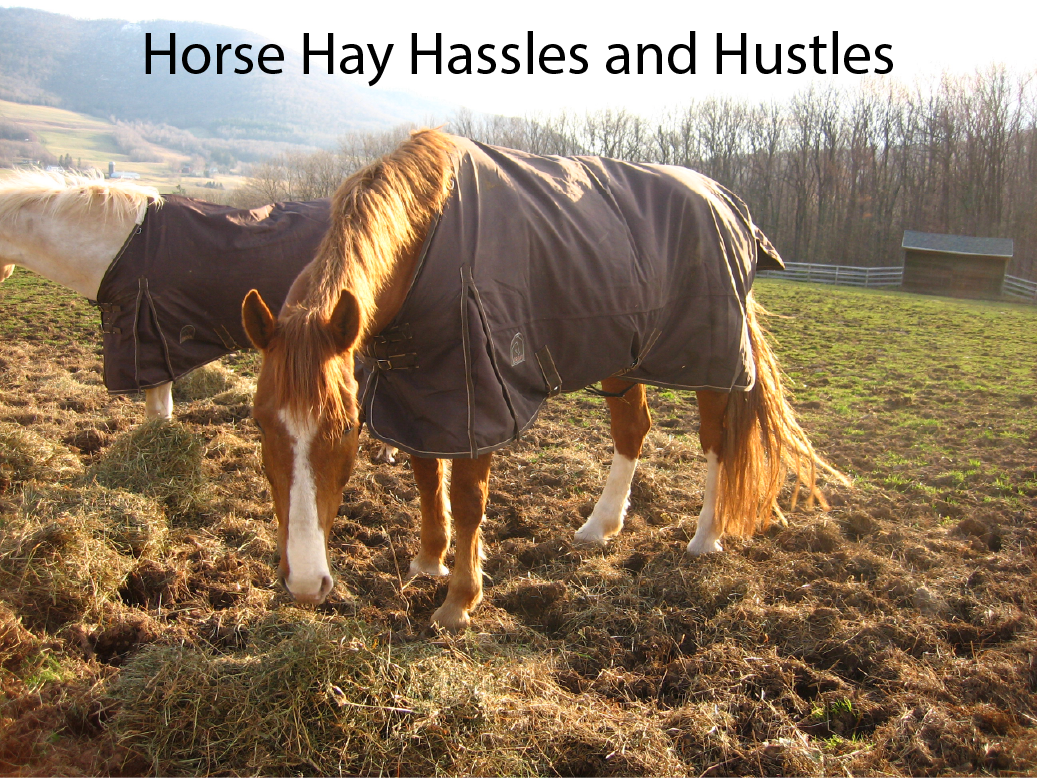
Horses and hay go together like peanut butter and jelly, gin and tonic and cookies and milk. If you own horses, you know that hay supplies are always on the shopping list and at times resourcing them can be difficult.
The challenge to quality hay production is more than adverse circumstances for crop growth that Mother Nature throws down on the fields. Scorching sun and dry earth, weeds and water, fertilizers and fuel, twine and transport, equipment and labor, are all part of the process and part of the problem with producing good quality hay.
It is not news to most horse owners that hay prices are soaring. Demand is up and supply is down. It is simple economics. Down because across the country hayfields have been turned under to replant grasses and legumes with higher income producing crops such as grains. Down because of the arid conditions. Down because farms across the country are going out of business, hampered by high taxes and low income and a lack of labor supply. Down because high costs for insurance, fertilizer, and equipment parts (if you can secure them) put farmers off farming hay. And down because frankly put, horse owners can be very difficult to please when it comes to hay quality. For good reason I will add. Horses’ digestive systems cannot tolerate the lower quality hay that is produced for cattle and other livestock.
The hay supply issue presents a conundrum for horse owners that seek to continue using hay as forage for their horses. In regions of the country where hay doesn’t grow at all, transport costs to bring hay in are through the barn roof. If you’d like your hay delivered and stacked, then premium pricing will need to be paid for the labor involved.
Cutting down labor costs by utilizing large baling equipment (that generally retails for over $100,000 and that is just for the baler), is one option for the farmer that does not have the energy or the money for the extra labor needed to unload and load small square bales. Given that the machine itself can be afforded. With a large round or square baler comes the need for other equipment. The spear to move the bales, a flatbed that can take the weight of the oversized hay bales and something to pull it with, extra storage space as stacking larger bales more than a few rows high requires even more equipment.
As a result of the hard labor involved in production of small squares, many farmers have switched to the larger balers. This trend is likely to continue and poses a problem for horse owners with limited access to their barns or hay storage areas and for folks that don’t have the equipment needed to move and manage the heavy large hay bales.
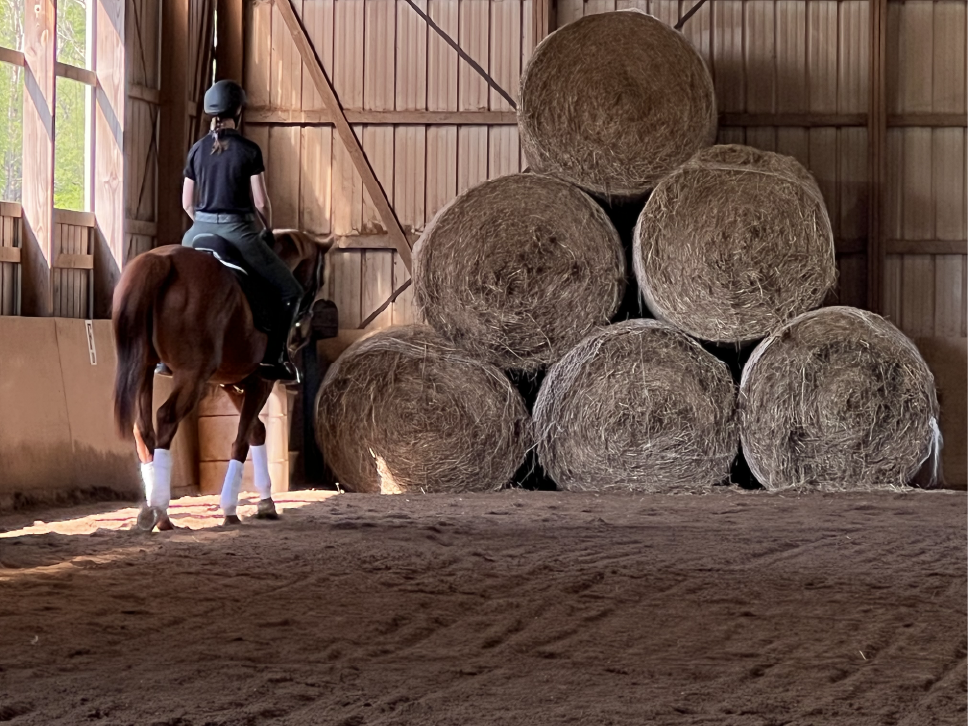
Most horse owners know that large square or large round bales can pose a health risk for their horses with hidden dead critters inside causing botulism or hay being baled too wet and being full of mold and dust. But even small squares can contain unwanted detritus and be poorly cured.
The increased use of preservatives, dry down agents and chemicals in our horses’ hay supply is mind boggling. Many of these products have never been tested on horses for safety. Horses breaking out in hives, suffering gastric issues like ulcers and hind gut issues, contracting respiratory inflammatory diseases and the like are health issues that are associated with ingestion of ‘treated’ hay or hay that is improperly cured for horses.
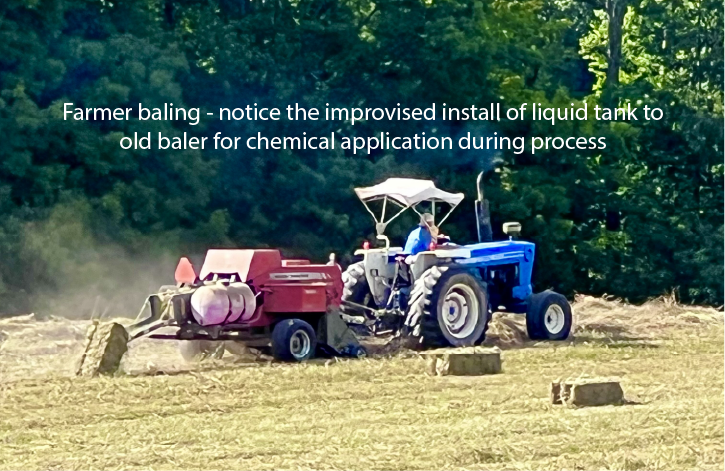
“Green as a dollar bill” used to be a mantra for good hay. Unfortunately, hay being green and smelling sweet enough to eat (pull a few flakes and take it down to the local signature chef at their restaurant so they can use its grassy delicious smell to smoke their culinary delights), is now less relevant. Hay that gets wet and is then dried and baled will always show less green color than hay that stayed dry after being knocked down. But the use of preservatives and dry-down agents bring their own ‘scent’ to the equation, and the quick turnaround time for hay from cutting to baling using these chemical agents means it will be green in color, despite being artificially cured.
There are a myriad of other hassles and hustles that the horse owner faces.
Inconsistent Hay Quality and Type
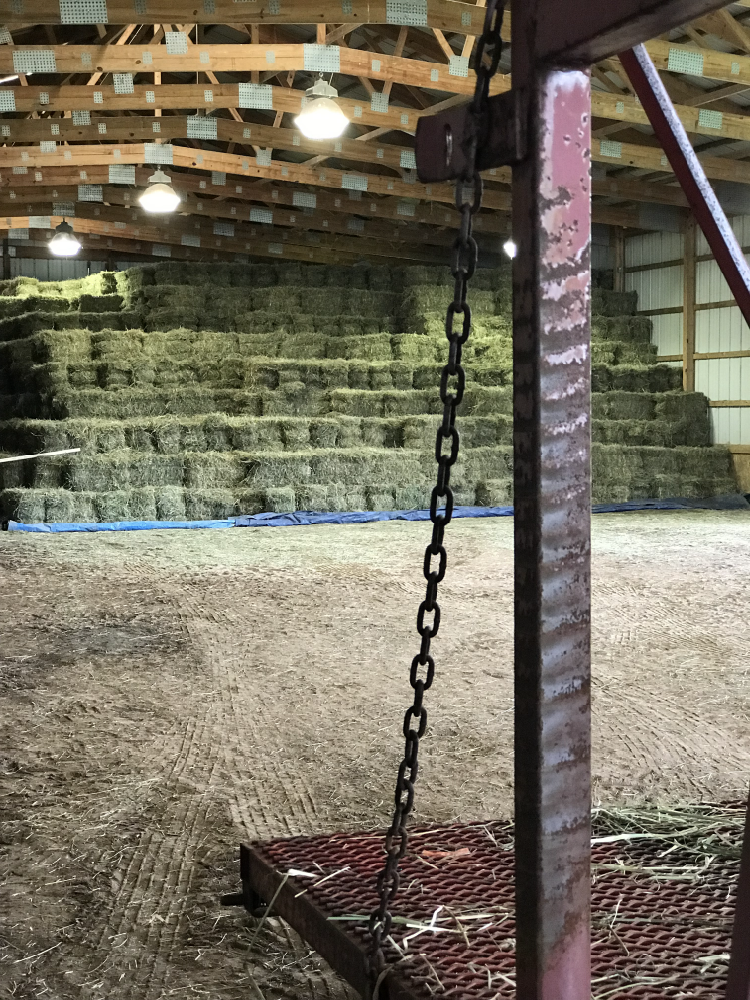 Inconsistent hay quality and type is inevitable if hay is purchased from a middleman or dealer. While a hay dealer may make every effort to only purchase good quality hay, there is a time delay and extra storage required for the hay and this time is often spent in a metal box when hay is supplied by dealers. This opens the container door to the hay stored being compromised. It may have been perfectly good hay when purchased and picked up, but now it has sat condensed in a metal box and may pose a health risk to horses due to mold or dust.
Inconsistent hay quality and type is inevitable if hay is purchased from a middleman or dealer. While a hay dealer may make every effort to only purchase good quality hay, there is a time delay and extra storage required for the hay and this time is often spent in a metal box when hay is supplied by dealers. This opens the container door to the hay stored being compromised. It may have been perfectly good hay when purchased and picked up, but now it has sat condensed in a metal box and may pose a health risk to horses due to mold or dust.
Proper hay storage requires a consistent passive air flow around the hay in a dry space. Temperature fluctuations in a tightly stacked container will subject the hay to condensation.
Worth Its Weight in Water
Heavily compressed bales will be denser and theoretically offer better value for money if buying by number of bales versus weight. However, as a buyer you also should be aware that a heavier bale can also be heavy because of a higher water content. Hay should not be baled over 14% moisture for both fire safety and to prevent issues with mold and dust in bales developing the bale after it has ‘sweated up’ for two weeks post baling.
Foraging For Forage
The internet offers a great means to market hay and to connect producers with purchasers. Sadly, it has also increased the risk that a horse owner will lose money due to nefarious business practices of a few unscrupulous individuals.
Never prepay for a load of hay, buy it sight unseen and hand over cash via Venmo, Paypal or other means without being completely confident the seller is trustworthy.
How to Overcome Finding Forage Issues
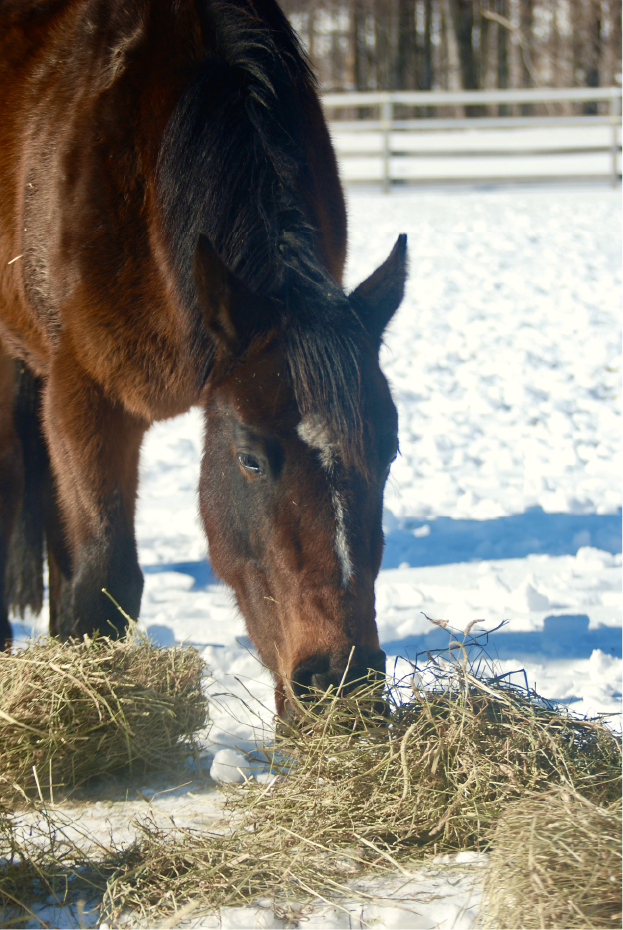 If you can source your hay locally, pick it up yourself and stack it yourself then consider yourself in a good spot. This is the best way to ensure you not only know the provenance of your hay, but it is also usually the most economical method of buying hay.
If you can source your hay locally, pick it up yourself and stack it yourself then consider yourself in a good spot. This is the best way to ensure you not only know the provenance of your hay, but it is also usually the most economical method of buying hay.
Buy quality not quantity when it comes to hay, as this will mean less wastage of the product which in turn means less cost overall.
If you feed hay outside, consider using an equine hay feeder. Hay wastage is significant when hay is thrown over the fence for feeding or a large bale is planted in the middle of the field on the ground. Use of an equine hay feeder can reduce wastage by up to 30%, even for small squares.
The use of slow feeders can also not just slow down the rate at which a horse ingests the hay but also minimize wastage.
Buying hay in quantity can save on costs. Negotiate a discount from the supplier for large orders and consider splitting loads with a neighbor if it is feasible and you can’t use an entire trailer load or have the storage facility to house it.
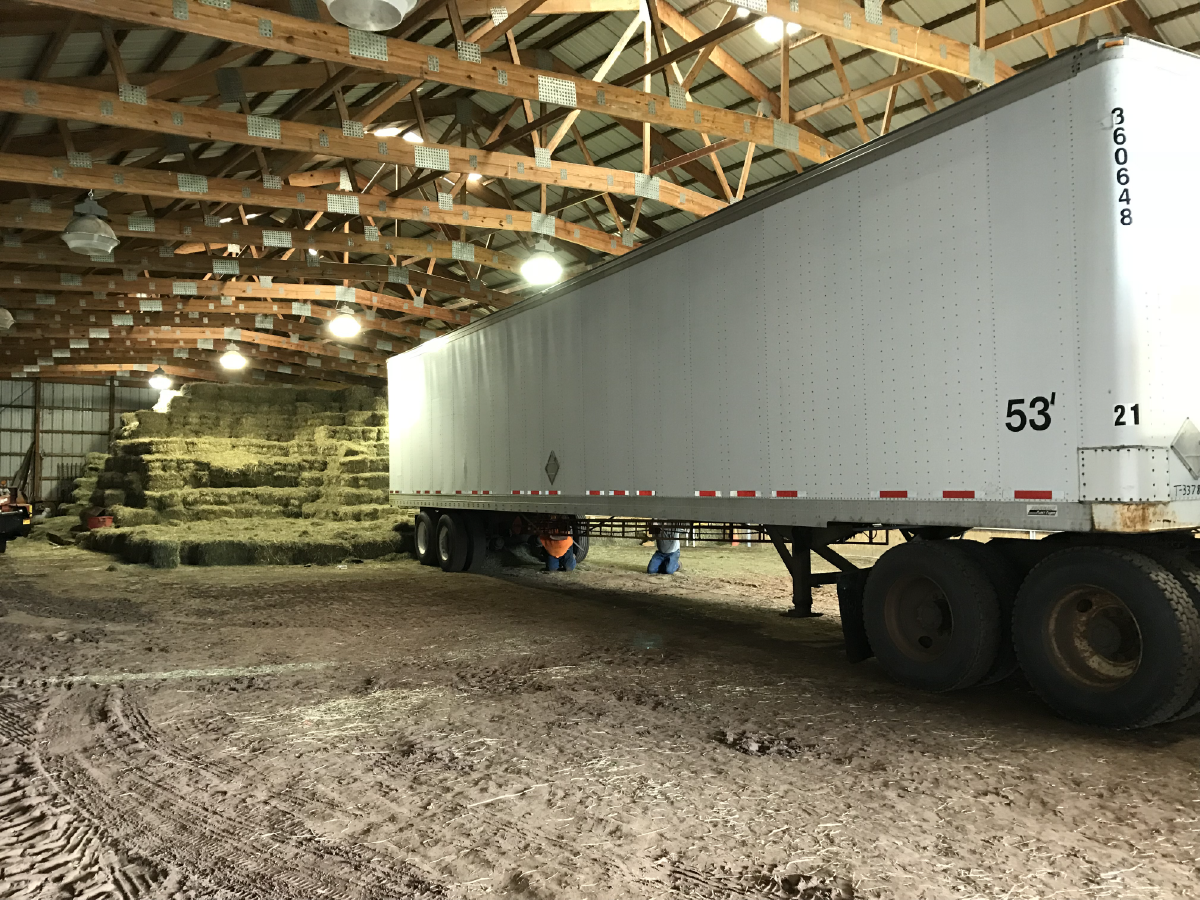
Supplementing your horses’ forage with hay extenders, hay replacers and hay stretchers. These product terms are interchangeable to some degree as there is no definition to the marketing terms. Read the labels carefully to determine the composition of the products and whether they are to be fed as a partial supplement to hay or as a complete replacement.
Some of these products will contain hay and some will be made from complete feed. The percentage of actual stem hay in the pellets, cubes, or granules, will differ from product to product and in some it will be replaced entirely with other feed such as beet pulp and grains. There are a wide range of forage replacement products available on the market.
Remember that hay offers your horse more than nutrition, it also supplies a much-needed bulk component for his digestive health and offers chewing satisfaction.
On a sidebar note, for older horses or horses with compromised ability to chew that require chopped forage, cost saving can be accomplished by purchasing a small chipper/shredder and feeding through flakes of alfalfa or other hay as preferred.
Switching your hay supply from 2nd cut to 1st cut is another good way to save money, as the former is traditionally more expensive. Low yields of 1st cut in the North-East in 2022, as the cut was made earlier than usual by many farmers due to good weather may mean that prices for 1st cut will be higher as demand is outpacing supply. While it was hoped that the 2nd cut yield would be higher because of its longer growing time to harvest, the drought conditions have hampered the 2nd crop and in certain areas, there is no 2nd cut to be made at all. Obviously, this fact will only serve to increase the price of any hay that is available.
Switching to a lower quality hay is also an option. For example, if a horse owner has relied on alfalfa for part of the horses’ diet, changing down to a timothy/mix or other product may be viable even if the horse is a high-performance animal and its protein ration will need to be supplemented through hard feed. Be aware that much of the alfalfa produced in the USA is planted as Round-Up Ready seed. The use of secondary crops to mitigate weed issues in alfalfa stands is not as popular as it once was, and the use of herbicides has sadly crept into the horse hay supply chain.
Herbicide use is not limited to alfalfa production, it is also common across many hay products. The only way around that is to utilize organically grown hay. And of course, for obvious reasons that is more expensive to produce, and the yields are lower making it more expensive to buy.
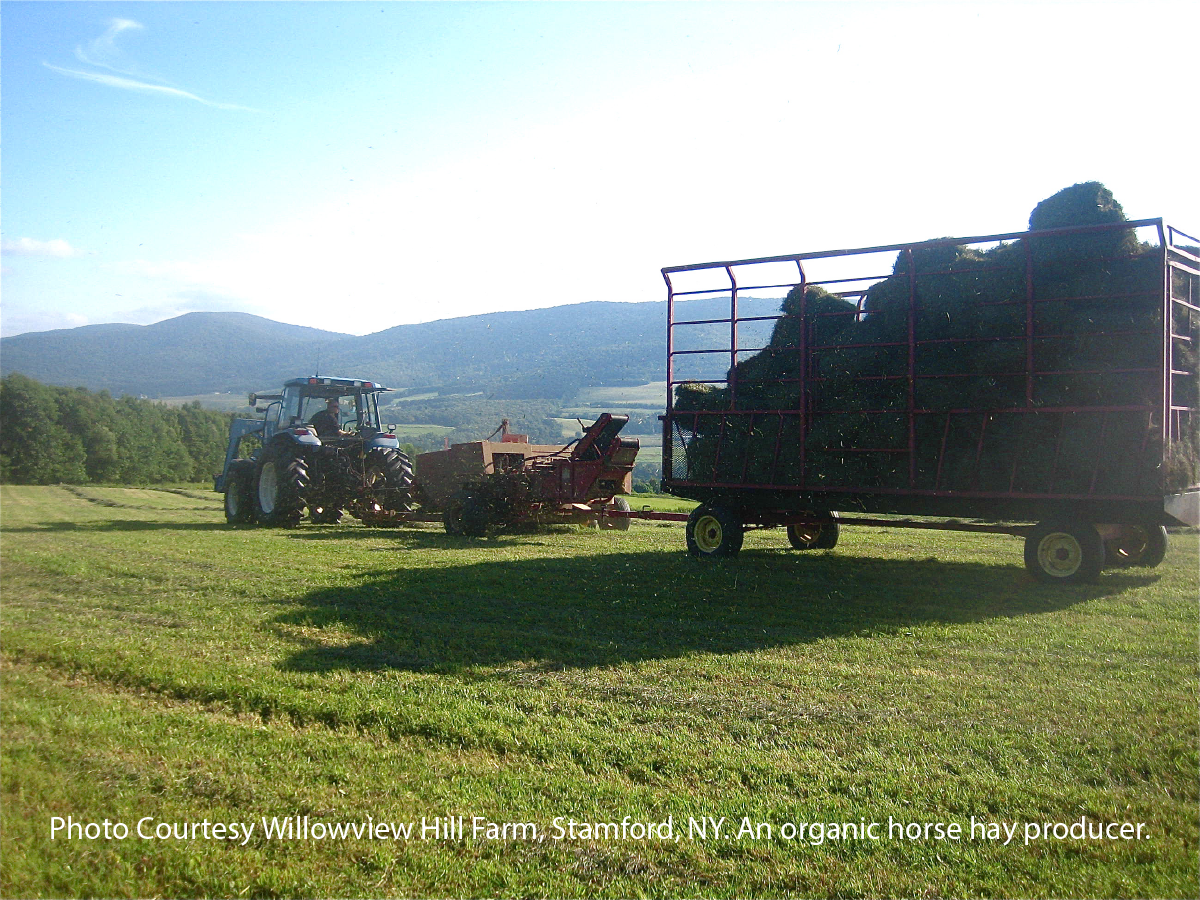
You may be able to use a hay cleaning machine that will steam your hay and reduce the mold and dust particles to as much as 99% without the loss of nutrient value. Steaming can improve the digestion of the nutrients in the hay, reduce risks of respiratory inflammation and help keep your horse hydrated. These machines are utilized for hay treatment at many advanced level barns and events. They are well worth checking out.
Whatever You Do
When you plan your horse keeping lifestyle always include space for storing hay in the design. If you are a boarding facility hay is certainly going to be a huge component of your annual budget, so implement whatever cost saving measures that make sense that won’t compromise the overall health of the horses in your custody, care, and control.
If you are fortunate enough to be able to bring in your own hay of your own property, reseeding some fields with drought resistant types of grasses may be an option. The climate issue is not likely to improve in coming years and being prepared is the best way to weather the storm.
